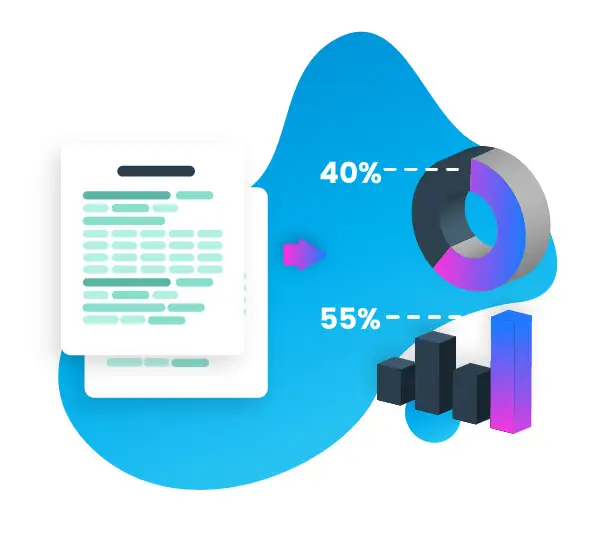
What is SEO PR and How Does it Help You Rank Higher?
SEO PR (more commonly known as digital PR) is the process of creating newsworthy and unique content and outreaching it to relevant journalists, publications and stakeholders. This is done with the aim of earning top-tier coverage and links.
A successful SEO PR campaign will include:
- Idea generation/brainstorming.
- Primary and/or secondary research (depending on the idea).
- Content creation/press release writing.
- Data visualisation, graphics creation and asset creation.
- Outreach.
- Follow ups.
A successful SEO PR campaign will result in:
- Coverage and links earned on relevant and powerful websites (see here for examples).
- You/your client being positioned as a thought-leader and credible source on topical/industry information and news.
- Increased referral traffic to your site/your clients site from the links and coverage earned.
- Potentially an increase in branded search traffic following the release of the campaign.
- An increase in organic search visibility over time.
- An increase in sales, traffic and/or enquiries as a result of the organic visibility gains.
What a Successful SEO PR Campaign Looks Like
For @SaveOnEnergyCom UK, we devised a points-based scoring system ranking members of the Royal Family from most to least eco-friendly ?
— Reboot (@rebootonline) October 9, 2020
It's bagged 47 placements so far and they continue to come in thick and fast!
For the full results, head to the blog: https://t.co/2ri81zlp3K pic.twitter.com/Vunjxdw7tc
See more up-to-date examples here.
Why is SEO PR Needed?
It is no secret that link building is a key part of any high-quality SEO campaign and, over the years, countless techniques and strategies have been developed to help with link acquisition.
For example, the following strategies are all popular (although not always successful and/or high-quality) methods used to acquire new links:
Some common (usually less effective) link building strategies:
- Publishing guest posts on other peoples blogs.
- Submitting a website to directories that include a link.
- Creating a Private Blog Network (PBN) on expired/auction domains.
- Using a press release distribution service.
- Offering internships and scholarships to universities/colleges at scale.
- Commenting on other people's articles and leaving a link back to your website.
Many strategies and techniques that SEOs have developed over the years to acquire backlinks fall outside of Google’s guidelines and could be considered low-quality.
In order to offer link building at scale, whilst remaining profitable, some agencies turn to automated processes to start acquiring links. This means that the quality of the links gradually deteriorates and/or Google quickly becomes aware of the gimmick and prevents it from being effective (and in some cases even penalises your website for using such strategies!).
As with most things in SEO, there can be genuine and honest reasons to use some of the above techniques. When this is the case, they can be successful and helpful. However, they should not form the foundation of your link acquisition strategy.
This is where digital PR/SEO PR comes in. This process relies on creating genuinely newsworthy, useful and valuable content which journalists love to share and link to.
This strategy can result in your site securing relevant and powerful links from high Domain Authority (DA), high Domain Rating (DR) and high Trust Flow (TF) (or whatever metrics you prefer) websites.
When used correctly, an online PR campaign will remain within Google’s guidelines and help build brand awareness (which can result in new links that will help SEO efforts).
Benefits of SEO PR
In short, a digital PR campaign can have many key benefits on your SEO campaign and business as a whole. Perhaps more importantly, most other link building strategies fall outside of Google’s guidelines and increase the risk of receiving a penalty.
An online PR campaign can offer many benefits including:
- Top-tier link acquisition/earning.
- Increased brand awareness.
- Positioning your brand as a thought-leader in the industry.
- Increased referral traffic from relevant and high-quality websites and publications.
- Increased sales and enquiries from that new referral traffic.
Any strategy not focused on providing genuine value to your audience and customers, and which attempts to artificially inflate your websites percieved authority, could put your website at risk and should be avoided.
How SEO PR Works
There are several key steps that make up an online PR campaign. All of these ultimately lead to the content getting picked up by and featured on top-tier websites such as industry and trade magazines, regional and national newspapers and more. So, below we will explore the steps that make up a good digital PR campaign.
Idea Generation and Brainstorming

The first stage of any successful SEO PR campaign involves brainstorming to come up with a unique and newsworthy idea. Without this, the campaign will fail no matter how good you are at all the other steps.
A good brainstorming session will use the team's knowledge on the client, their website and their industry to come up with relevant ideas that could grab attention and that journalists would love to share.
Finally, any ideas must be realistic and feasible. Some prior research on what kind of data is available, if any topics or subjects should be avoided completely and what has been done before helps ensure that any ideas that the team comes up with can actually be used.
Collecting Primary and Secondary Research

Once the idea has been ageed, research must be carried out and data collected. This could involve putting together a Freedom of Information (FOI) request to source new data from local councils, using third-party tools to gain interesting insights, speaking with industry experts to add key quotes or a wide range of other research approaches.
Some ideas won’t require traditional research (as is the case for purely creative or artistic campaigns) but time will still need to be spent exploring how long it will take to create the piece, what will be needed and how much it will cost.
Content Creation

This is the part that most people think of when it comes to any PR campaign, the press release. In order to effectively outreach a new campaign, some content is needed to send out to relevant journalists and publications.
Outreach content could include:
- A press release to be sent to journalists directly.
- A creative asset published on the client’s website.
- Any physical materials needed for or relevant to the idea.
Whilst the idea and outreach of a campaign might be the most important steps, the content created can have a real effect on the success of a campaign. With so much content available online these days, new pieces must be well-designed and appealing in order to get the attention of both journalists and readers.
Data Visualisation

This goes hand in hand with the content creation and, if done right, can really help a campaign get picked up.
A well-designed graphic, which clearly and concisely shows what the data is saying and why it is interesting, allows people to quickly identify what the piece is about and why they should care.
Furthermore, people love sharing nice visuals on social media which can help gain further coverage and lead to more links.
Outreach

Second only to the campaign idea or angle, outreach can make or break any SEO PR campaign.
You can have the best idea, data and content in the world but, if no one knows about it, then it will only be appreciated by those who actively worked on it.
In order to land the best coverage and earn the most powerful links, the contet must be outreached to relevant journalists and publications.
At this stage, it really helps to be working with an agency who has established and nurtured relationships with these top journalists over the years.
Follow Ups

Last but certainly not least is following up on the initial outreach efforts.
Journalists get flooded with hundreds, if not thousands, of emails each and every day. They can’t help but miss a few, no matter how unique and interesting the subject line is.
So, a good SEO PR campaign will follow up on all outreach efforts to ensure that those who might be interested in the piece can find it.
Frequently Asked Questions
How does PR and SEO work together?
As detailed above, SEO and PR can be very closely related if the ultimate aim of those PR efforts is to earn coverage and links on websites and publications which will help the organic visibility of a site.
Traditional PR however does not have such a focus on SEO or links. It is more about looking after the brands image, perception and reputation as a whole. Despite these different key performance indicators (KPIs), SEO teams can benefit from the work that a traditional PR team does and a traditional PR team can see rewards from highetend organic visibility also.
Can you give some examples of a successful SEO PR campaign?
Yes, we can. In fact, we have a whole page dedicated to it! You can see an up-to-date list of our latest digital PR campaigns and the latest coverage and links they have earned here.
How much does an SEO PR campaign cost?
In order to earn the most amount of coverage possible and to effectively target some of the biggest and best publications, these campaigns take time, creativity and resources.
Campaigns can take anywhere from 20 to upwards of 60 hours depending on the amount of data involved and you can find pricing information here.
How long does an SEO PR campaign take/last?
This depends heavily on the idea and type of content that needs to be created. If the idea requires significant amounts of primary research or, if an extensive on-site asset needs to be designed and coded, the campaign can take a significant amount of time.
Brands looking to secure the most amount of coverage might also want to invest in some more reactive work alongside their main campaign which can mean more hours are needed.
We have found that the minimum amount of time to work for a standard SEO PR campaign is 20 hours.
